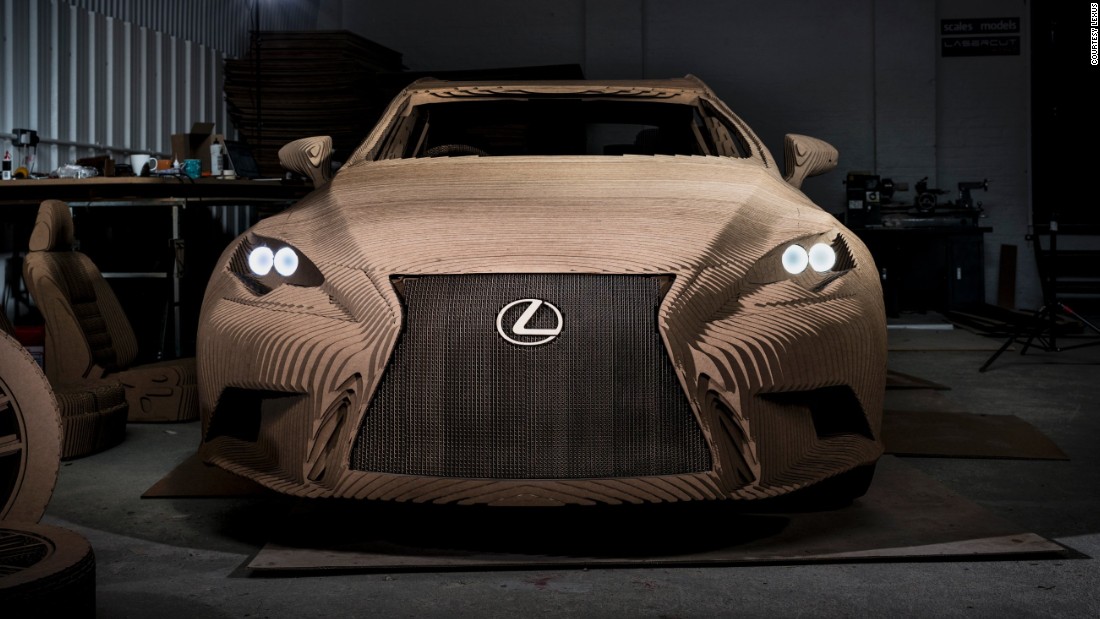
The "origami car" was built in London by a five-strong team of professional designers and modelers from specialist companies LaserCut Works and Scales & Models.
"The
seats took a few attempts to get just right and the wheels required a
lot of refining," explained Ruben Marcos, of Scales & Models.
"Once
we could see the physical pieces taking shape, we could identify where
we needed to make improvements -- as with anything, there were some
elements of trial and error, but as we had all the resources we needed
in-house, this made the changes easier to produce."
The
modelers used a digital 3D model of the IS, provided by Lexus, which
was then divided into a series of parts, such as the main body,
dashboard, seats and wheels.
These
were then digitally rendered in 10mm-thick "slices" to provide the
two-dimensional profiles needed for the precision cutting of each of the
1,700 fully recyclable sheets of cardboard.
Each
layer was given its own reference number to ensure it was assembled in
the right sequence and the car was then hand-built over a three-month
period.
The cardboard cut-out car has a
replica interior, functioning doors, headlights and rolling wheels. An
electric motor mounted on its steel and aluminium frame allows the car
to drive.
The car was on show at the Grand Designs Live Show consumer exhibition in Birmingham, UK from 8-11 October.
Earlier this year Lexus debuted a real-life Back to the Future-style hoverboard,
containing a series of magnets and superconductors cooled by liquid
nitrogen. It was able to levitate -- not unlike Marty McFly's hoverboard
in the 1989 film Back to the Future Part II.



No comments:
Post a Comment